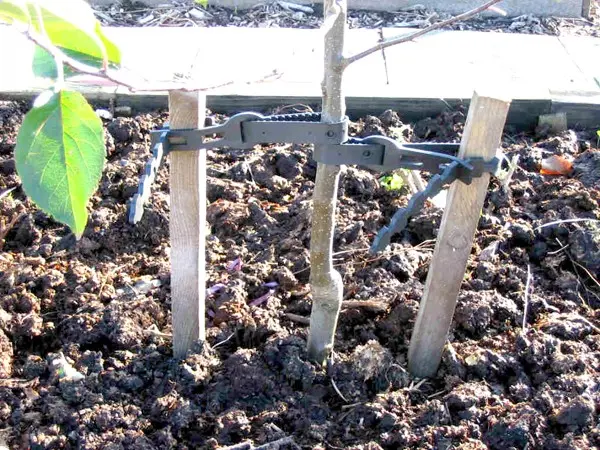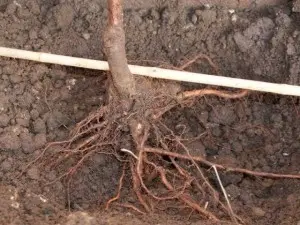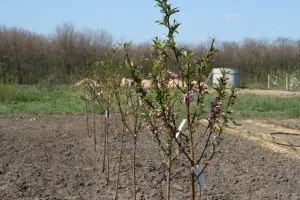Contents
Peach is not as demanding on the type of soil as it is on the planting site, so you should take into account some of the subtleties of its cultivation in order to get the highest quality and largest harvest. For example, if a peach is planted in a shaded place or among old, high-growing trees, the ripening of its wood will be delayed, as a result of which the fruits become smaller, their taste qualities decrease, and generative buds are not laid.
Time to land
Peach planting time depends on the climate zone. For example, in the Crimea, you can fearlessly plant a peach in autumn. At the same time, planting in regions more distant from the south in autumn shows a low survival rate of even well-developed seedlings, since the tree does not have time to take root, grow stronger and die during winter frosts or spring frosts.
The optimal planting time is in March – early April, provided that the landing pits have been harvested since autumn. As soon as a stable warm temperature sets in, the soil thaws and dries a little, seedlings should be planted in the ground. Planting in May is not recommended; trees planted at this time take root for a long time. It should be borne in mind that a peach is not a peach sensitive to excess moisture and does not tolerate waterlogged soils, the groundwater level should be at least 2,2-2,5 m. The trees of the old garden will also inhibit the growth of a young peach if they are located closer 2-3 m.

Planting material
Seedlings
The most economical option to acquire a fruit-bearer on your own plot is the ability to plant a peach from the seed yourself. In this case, several well-ripened fruits should be left. The bones are carefully removed, washed and dried. In wet sand, sawdust or a mixture of moss and peat, the material is stratified. The seeds should be in a moist substrate until germination, on average it takes 2,5-3,5 months. To speed up the process, after 35-45 days, carefully remove the seed and in early spring, after the onset of a warm stable temperature, sow the seeds in the ground at a distance of 20-25 cm from each other.
Natural stratification is also common, when the seeds are planted directly into the soil in the autumn, before the onset of the first frost, in October-November. In the cold winter period, standing in natural conditions will occur. After that, the seedlings are dug up, leaving thicker ones, with a developed root system, or covered, leaving them to winter in open ground. It should be borne in mind that although this method allows you to save on planting material, it does not guarantee the receipt of a similar peach tree and the yield from which the seeds were taken.

Saplings
It is more likely to get a good harvest when planting one- or two-year-old seedlings. At the same time, you can purchase an already grafted, developed, strong seedling. In addition, their survival rate is much higher than that of seedlings, and they are more resistant to environmental conditions.
If seedlings are purchased at a considerable distance from the garden plot, they should be wrapped in a damp cloth and placed in a plastic bag before transportation, this will avoid drying out and overheating of the roots. Damaged root tips before planting are cut 0,5-1,5 cm to healthy tissue, while the cuts should be juicy and white.

Rules of landing
Before planting a peach, you should dig and prepare planting pits measuring 100 cm by 80 cm, placing them according to the scheme, 40-55 cm between each other and 4-6 m between rows, depending on the type of rootstock. A mixture of black soil is poured into the bottom of the pit with 11-15 kg of humus and 250-400 g of superphosphate. Peach is planted 4-7 cm deeper than the level of the root neck. If a peach is grafted on apricot, cherry plum or other type of rootstock, the grafting site should be 12-15 cm below the soil level to reduce the effect of incompatibility.
A wooden stake is driven in the middle of the pit, which will serve as a support for the young plant and will avoid damage and inhibition of peach development in strong winds. The tree is tied to it with an eight-shaped knot in two places with twine. The roots of the plant are straightened, directed in different directions, and covered with earth from above, compacted and watered abundantly several times. The trunk circle is mulched with a small layer of 3-4 cm of humus, compost or sawdust, while fresh manure cannot be used. On the second or third day after planting, the tree is again plentifully watered in two doses. And in the future, they make sure that the soil in the near-stem zone does not dry out, but they do not swamp it either.
If the spring planting time was missed, and the peach was still planted in the autumn, it is necessary to dig 2 pegs on both sides of the seedling. Before the onset of the first frosts, a young tree is covered with a dense bag, strengthening it on stakes, and sprinkling it with soil. In order for the seedling to have access to air, several holes are made on the south side of the bag. This shelter is removed in the spring, when the air temperature is at least 5-10C.

How to care after planting
Immediately after planting a peach, its crown is formed, as a rule, in a cupped shape. From the place of inoculation, on the stem of the seedling, to the first developed side branch, a segment of 35-45 cm is measured, corresponding to the height of the future stem. The shoots that develop on it are cut under the ring, leaving 3-5 of the most developed above, located at least 8-15 cm apart and directed in different directions. After that, the seedling should be cut at a height of 75-85 cm, and the rest of its shoots should be tame 3-4 buds from the base of the stem
In the second year after the peach is planted, the formation of the tree continues. Why select no more than 5 lateral shoots, which later develop into skeletal branches and bear fruit abundantly. They should move away from the trunk at an acute angle and be directed in different directions. The allotted shoots for skeletal branches are shortened by 50-60 cm, and the premature shoots developing on them are cut into 2-3 growth buds. On the trunk, the grown shoots are completely removed, as well as competitive shoots, which are located next to the future skeletal branches. The remaining shoots 20-25 cm long are pinched over 5-7 leaves in early June to stop their growth.
In the first years after planting, fertilizers are applied 2-4 times during the growing season, with an interval of 2-4 weeks. It is best to carry out the first feeding in April, the next – in 2-2,5 weeks at the beginning of May, and the rest in June, but not later than July, otherwise the shoots will not stop growth in time and will not mature by the end of the growing season. Ammonium nitrate or manure solution is used as fertilizer, adding potassium and phosphorus in the latter case. In order not to damage the roots in dry weather, the day before top dressing, the tree is watered abundantly. If the young plant is underdeveloped, with little foliage, the amount of fertilizer should be cut in half.
Video “How to plant a peach”
This video highlights the technology of planting a peach and the subsequent care of a tree, the features of the first pruning and top dressing.









